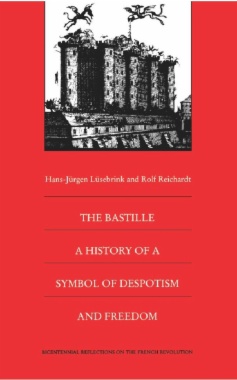This book is both an analysis of the Bastille as cultural paradigm and a case study on the history of French political culture. It examines in particular the storming and subsequent fall of the Bastille in Paris on July 14, 1789 and how it came to represent the cornerstone of the French Revolution, becoming a symbol of the repression of the Old Regime. Lüsebrink and Reichardt use this semiotic reading of the Bastille to reveal how historical symbols are generated; what these symbols’ functions are in the collective memory of societies; and how they are used by social, political, and ideological groups.
To facilitate the symbolic nature of the investigation, this analysis of the evolving signification of the Bastille moves from the French Revolution to the nineteenth century to contemporary history. The narrative also shifts from France to other cultural arenas, like the modern European colonial sphere, where the overthrow of the Bastille acquired radical new signification in the decolonization period of the 1940s and 1950s. The Bastille demonstrates the potency of the interdisciplinary historical research that has characterized the end of this century, combining quantitative and qualitative approaches, and taking its methodological tools from history, sociology, linguistics, and cultural and literary studies.
- CONTENTS
- Editors’ Introduction
- Preface
- Translator’s Note
- Introduction
- 1. Genesis of a Political Symbol: The Bastille, 1715–1789
- Anti-Bastille Journalism: Scandalous Stories of Prisoners
- The Reality-Forming Power of the Symbolic: Prison Practice versus Social Consciousness
- 2. The Storming of the Bastille: The Historical Event as Collective Symbolic Action
- The Storming of the Bastille: Causes and Process
- How a Decisive Event in World History Is “Made”: The Symbolic Exaggeration of 14 July 1789
- 3. Revolutionary Symbolism under the Sign of the Bastille, 1789–1799: A Prime Example of the Self-Mystification of the French
- Radicalization and Diversification of a Collective Symbol
- The New Heroes: The Role-Model Function and Self-Staging of the Victors of the Bastille
- Martyrs of Freedom, Victims of Despotism: The Triumph of the Prisoners of the Bastille
- “The Patriot” Palloy: Conqueror of the Bastille and Vulgarizer
- The Patriotic Cult of Relics: The Staging of the Bastille Stones in Paris and in the French Provinces
- The Symbolic Foundation of National Identity: Festivals, Speeches, and Monuments Commemorating 14 July 1789
- Revolutionary Activism under the Sign of the Bastille
- Echo and Export of Bastille Symbolism Abroad: Germany as a Significant Example
- Appendix A
- Appendix B
- Appendix C
- 4. Bastille Symbolism in Modern France: The Republican Legacy of the French Revolution
- Heroic Martyrs of Freedom in History and Literature
- The Storming of the Bastille: A National Act of Faith
- Utilizations in Domestic Politics: From the July Revolution to the Resistance
- Appendix A
- Appendix B
- Final Remarks: On the Origin and Function of a Historical Symbol
- Appendix: Reports on the Storming of the Bastille, 1789
- Notes
- Works Cited
- Index

